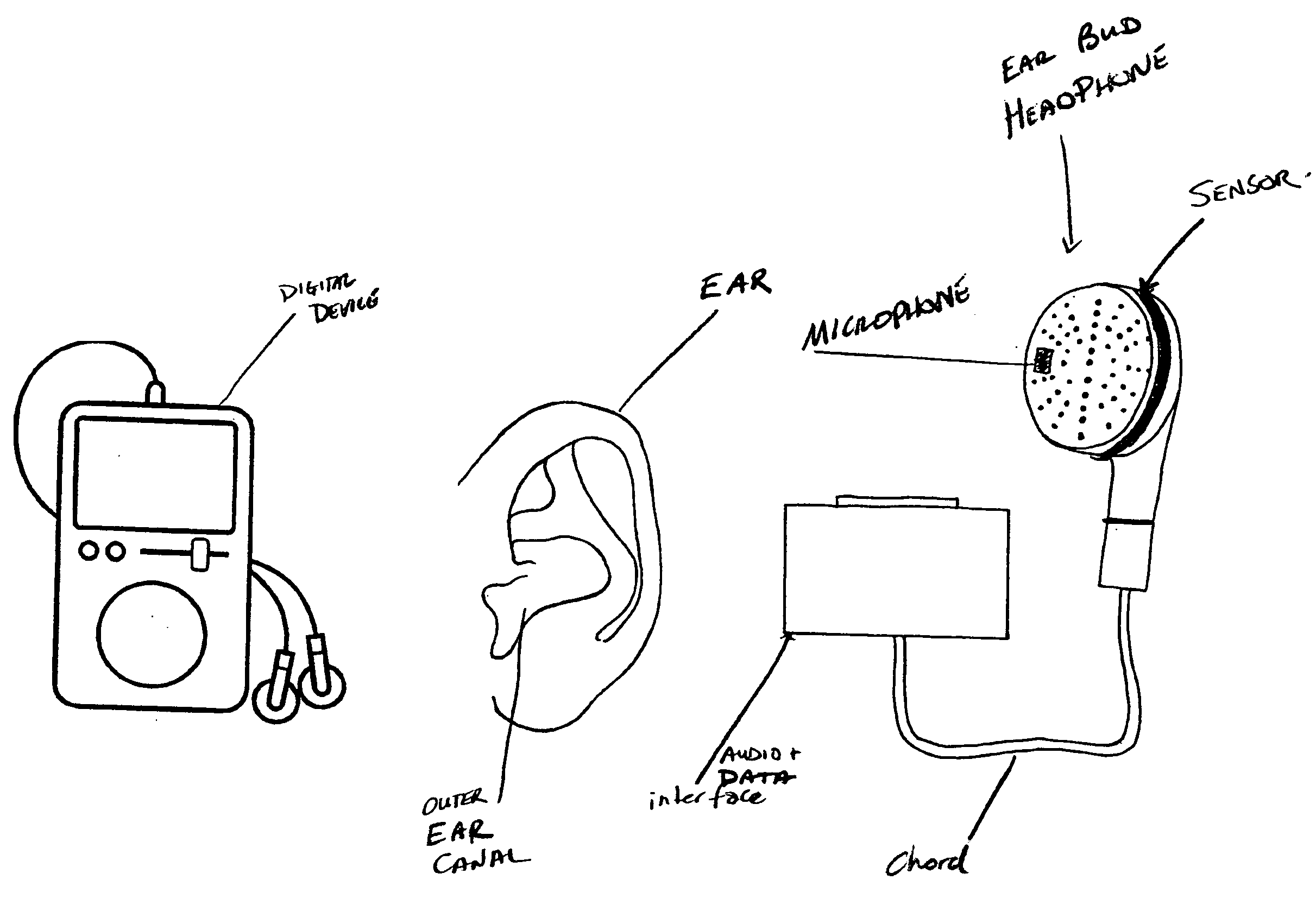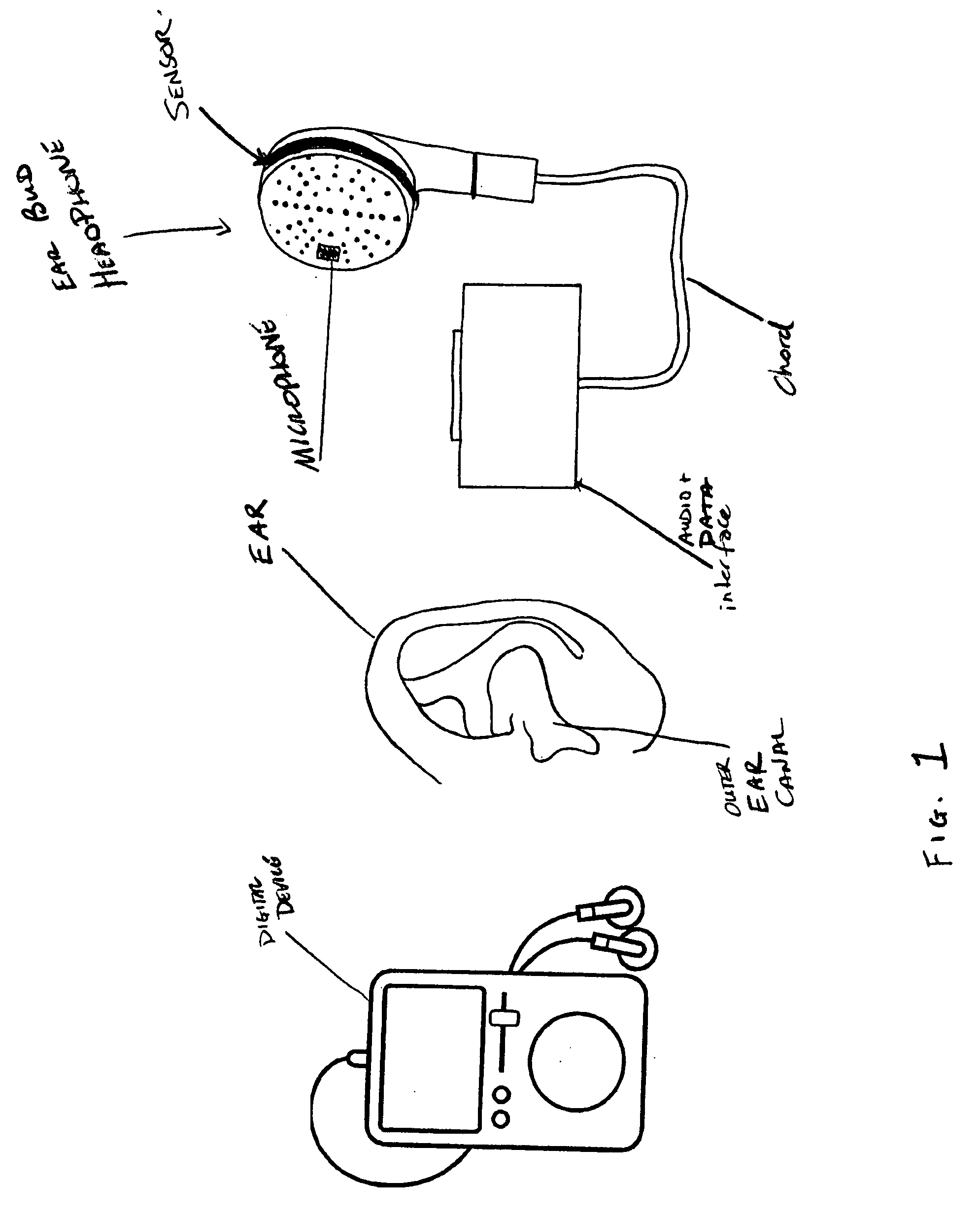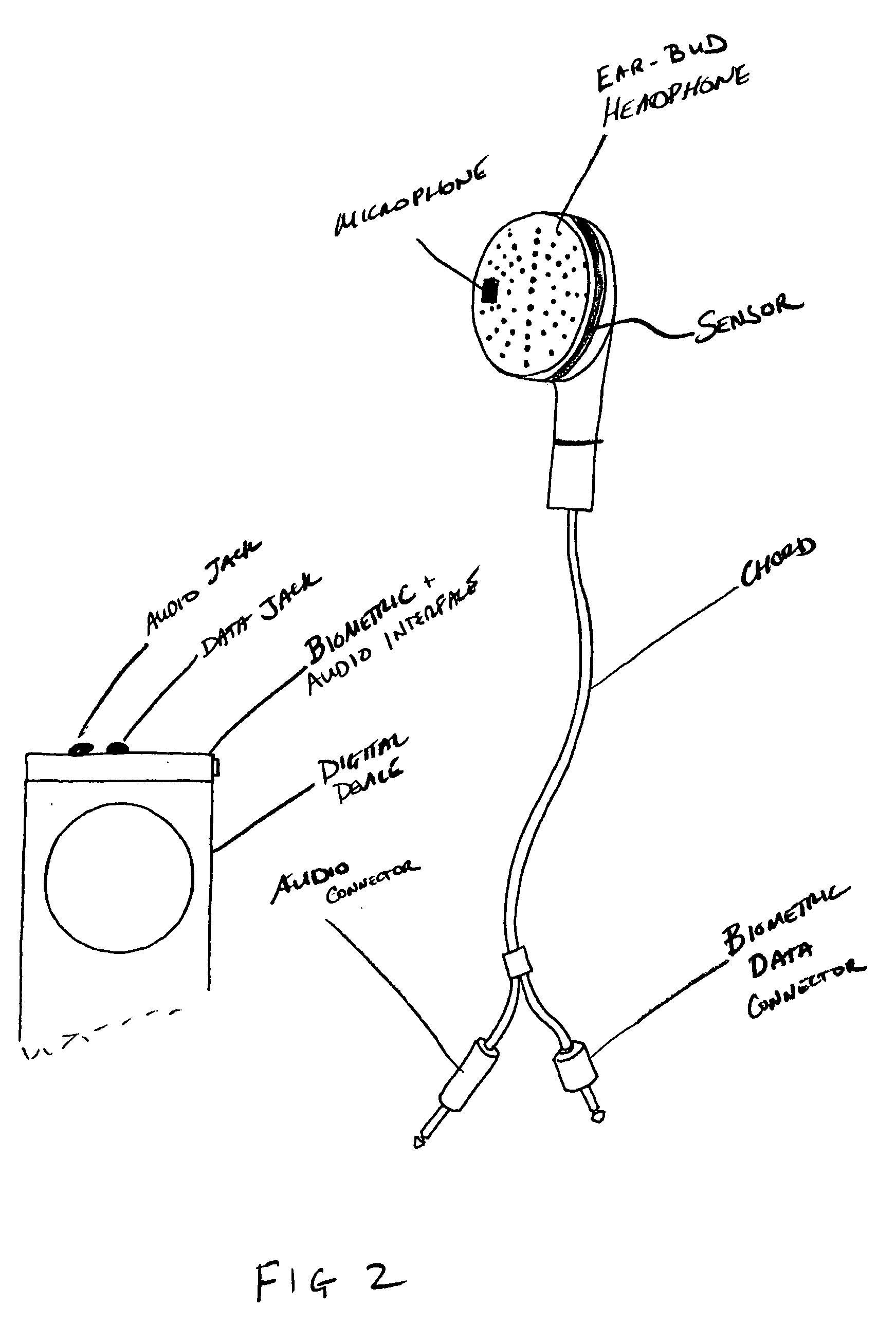In-Ear Biometrics
a biometric and in-ear technology, applied in the field of in-ear biometrics, can solve the problems of inconvenient retention of user information, inability to easily track or retain exercise heart rate information of users, and limitations of devices to monitor and display heart rate information
- Summary
- Abstract
- Description
- Claims
- Application Information
AI Technical Summary
Benefits of technology
Problems solved by technology
Method used
Image
Examples
Embodiment Construction
[0021]In the present invention, monitored biometric attributes include heart rate and body temperature. It will be appreciated that, in addition, heart rate and temperature may also be monitored and measured according to the present invention. An advantage of the present invention is that it substantially solves the problem of users not wanting to use additional equipment for monitoring during a workout.
[0022]In one embodiment, biometric attributes are monitored by one or more sensors. According to some embodiments of the present invention, the sensor is a microphone configured to filter out irrelevant / extraneous noise via DSP or other means. At least one of the headphones is capable of sensing one or more biometric attributes.
[0023]In the present invention, monitored biometric attributes include heart rate and body temperature. It will be appreciated that, in addition, heart rate and temperature may also be monitored and measured according to the present invention. An advantage of ...
PUM
 Login to View More
Login to View More Abstract
Description
Claims
Application Information
 Login to View More
Login to View More - R&D
- Intellectual Property
- Life Sciences
- Materials
- Tech Scout
- Unparalleled Data Quality
- Higher Quality Content
- 60% Fewer Hallucinations
Browse by: Latest US Patents, China's latest patents, Technical Efficacy Thesaurus, Application Domain, Technology Topic, Popular Technical Reports.
© 2025 PatSnap. All rights reserved.Legal|Privacy policy|Modern Slavery Act Transparency Statement|Sitemap|About US| Contact US: help@patsnap.com



